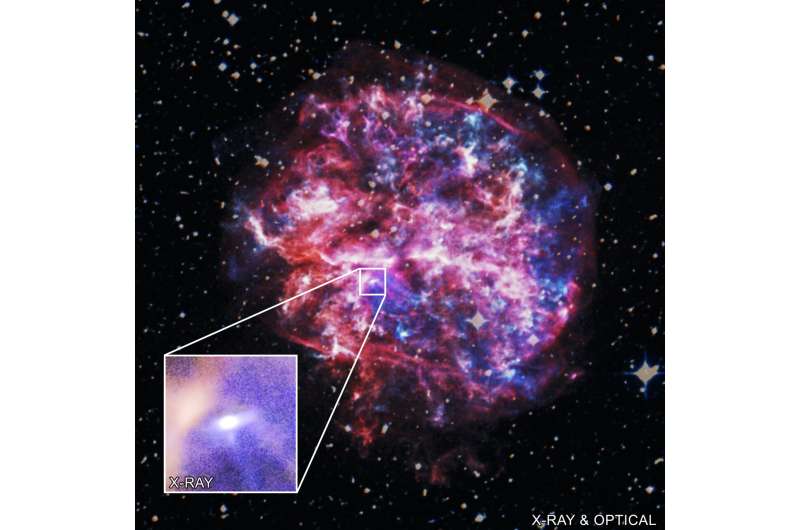A young pulsar is blazing through the Milky Way at a speed of over a million miles per hour.
This stellar speedster, witnessed by NASA's Chandra X-ray Observatory, is one of the fastest objects of its kind ever seen.
This result teaches astronomers more about how some of the bigger stars end their lives.
Pulsars are rapidly spinning neutron stars that are formed when some massive stars run out of fuel, collapse, and explode.
This pulsar is racing through the remains of the supernova explosion that created it, called G292.0+1.8, located about 20,000 light-years from Earth.
Source
This stellar speedster, witnessed by NASA's Chandra X-ray Observatory, is one of the fastest objects of its kind ever seen.
This result teaches astronomers more about how some of the bigger stars end their lives.
Pulsars are rapidly spinning neutron stars that are formed when some massive stars run out of fuel, collapse, and explode.
This pulsar is racing through the remains of the supernova explosion that created it, called G292.0+1.8, located about 20,000 light-years from Earth.
Source






















